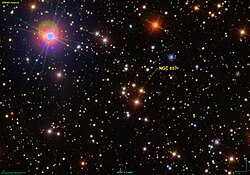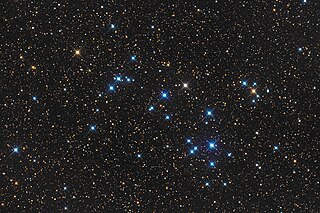
NGC 6633 is a large bright open cluster in the constellation Ophiuchus. Discovered in 1745-46 by Philippe Loys de Chéseaux, it was independently rediscovered by Caroline Herschel in 1783 and included in her brother William's catalog as H VIII.72. Bright enough to be seen with the naked eye, the cluster is considered a fine object for binoculars or small telescopes.

NGC 2129 is an open cluster in the constellation Gemini. It has an angular distance of 2.5 arcminutes and is approximately 2.2 ± 0.2 kpc from the Sun inside the Local spiral arm. At that distance, the angular size of the cluster corresponds to a diameter of about 10.4 light years. NGC 2129 is a very young cluster whose age has been estimated at 10 million years.

NGC 1980 is a young open cluster associated with an emission nebula in the constellation Orion. It was discovered by William Herschel on 31 January 1786. Its apparent size is 14 × 14 arc minutes and it is located around the star Iota Orionis on the southern tip of the Orion constellation.
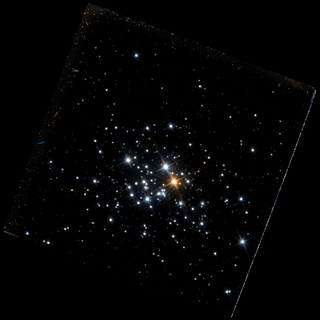
NGC 1984 is an open cluster associated with an emission nebula, it is located in the constellation Dorado in the Large Magellanic Cloud. It was discovered by John Herschel on 16 December 1835. The apparent magnitude is 9.9 and its size is 1.50 by 1.20 arc minutes.
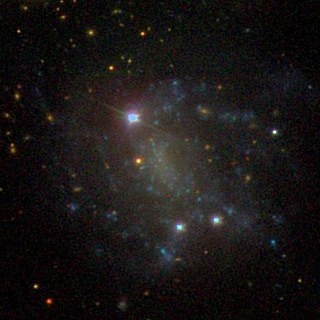
NGC 4523 is a Magellanic spiral galaxy located about 35 to 50 million light-years away in the constellation Coma Berenices. It was discovered by astronomer Heinrich d'Arrest on April 19, 1865. NGC 4523 is a member of the Virgo Cluster. A distance of for NGC 4523 was derived from using yellow supergiants in the galaxy as standard candles.

NGC 4540 is a spiral galaxy with type 1 Seyfert activity located about 64 million light-years away in the constellation Coma Berenices. NGC 4540 was discovered by astronomer William Herschel on March 21, 1784 and is a member of the Virgo Cluster.

NGC 4564 is an elliptical galaxy located about 57 million light-years away in the constellation Virgo. NGC 4564 was discovered by astronomer William Herschel on March 15, 1784. The galaxy is also a member of the Virgo Cluster.

NGC 4659 is a lenticular galaxy located about 54 million light-years away in the constellation Coma Berenices. NGC 4659 was discovered by astronomer William Herschel on April 12, 1784 and is a member of the Virgo Cluster.

NGC 3305 is an elliptical galaxy located about 190 million light-years away in the constellation Hydra. The galaxy was discovered by astronomer John Herschel on March 24, 1835. NGC 3305 is a member of the Hydra Cluster.
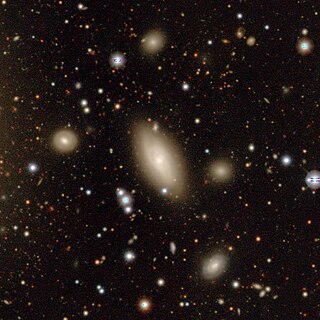
NGC 3307 is a lenticular galaxy located about 185 million light-years away in the constellation Hydra. The galaxy was discovered by astronomer John Herschel on March 22, 1836 and is a member of the Hydra Cluster.
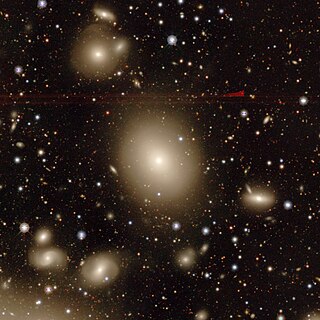
NGC 3308 is a lenticular galaxy with a faint bar located about 174 million light-years away in the constellation Hydra. NGC 3308 was discovered by astronomer John Herschel on March 24, 1835. It is a member of the Hydra Cluster.
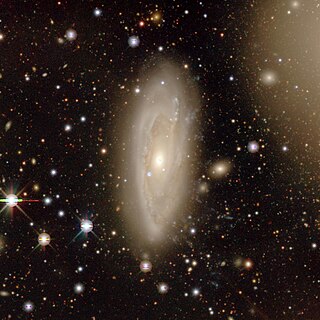
NGC 3312 is a large and highly inclined spiral galaxy located about 194 million light-years away in the constellation Hydra. The galaxy was discovered by astronomer John Herschel on March 26, 1835. It was later rediscovered by astronomer Guillaume Bigourdan on February 26, 1887. NGC 3312 was later listed and equated with IC 629 because the two objects share essentially the same celestial coordinates. NGC 3312 is the largest spiral galaxy in the Hydra Cluster and is also classified as a LINER galaxy.
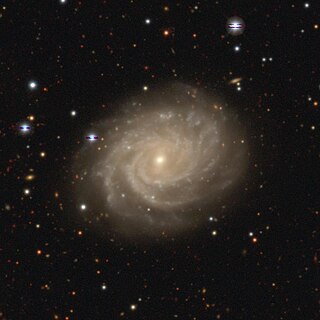
NGC 3336 is a barred spiral galaxy located about 190 million light-years away in the constellation Hydra. It was discovered by astronomer John Herschel on March 24, 1835. NGC 3336 is a member of the Hydra Cluster.

NGC 1444 is a small open cluster of stars in the northern constellation of Perseus, about 2-1⁄4° to the northwest of 43 Persei. It has an angular diameter of 4 arcminutes and a brightness of 6.60 in visual magnitude. The cluster has sixty members of seventh magnitude or fainter, and is better appreciated in larger telescopes. NGC 1444 was discovered on 18 December 1788 by the German-British astronomer William Herschel. It is located at a distance of 4,200 light-years from the Sun and is about 7.1 million years old. The cluster has a physical core radius of 1.73 ± 0.42 ly and a tidal radius of 17.4 ± 4.2 ly. The most prominent member is the triple star system Σ446, with a magnitude 6.7 primary. The cluster is a member of the Camelopardalis OB1 association.
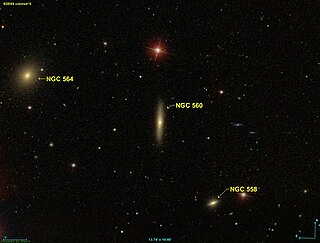
NGC 560 is a lenticular galaxy in the constellation Cetus. It is estimated to be about 250 million light-years from the Milky Way and has a diameter of approximately 150,000 light years. It is part of the Abell 194 galaxy cluster. NGC 560 was discovered on October 1, 1785 by the German-British astronomer William Herschel.

NGC 910 is an elliptical galaxy in the constellation of Andromeda. NGC 910 was discovered on October 17, 1786 by the German-British astronomer William Herschel. It is the brightest galaxy in the cluster Abell 347.
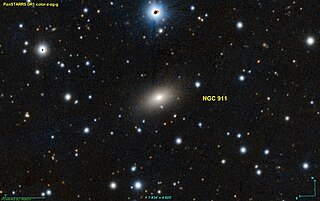
NGC 911 is an elliptical galaxy located in the constellation Andromeda about 258 million light years from the Milky Way. It was discovered by French astronomer Édouard Stephan in 1878. It is a member of the galaxy cluster Abell 347.
NGC 6863 is an asterism in the constellation Aquila. The celestial object was found on July 25, 1827, by the British astronomer John Herschel.

NGC 543 is an elliptical galaxy in the constellation Cetus. It is estimated to be 239 million light years from the Milky Way and has a diameter of approximately 40,000 ly. NGC 543 was discovered by the German-Danish astronomer Heinrich Louis d'Arrest. It is a member of the galaxy cluster Abell 194.
